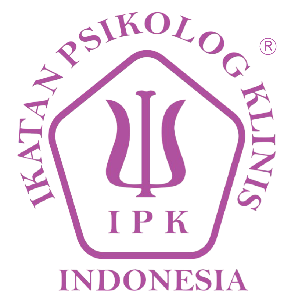The Influence of Self-Control and the Intensity of Social Media Usage on Adolescent Sexual Behavior
DOI:
https://doi.org/10.26740/jptt.v14n03.p311-321Keywords:
Social media, Self-control, Sexual behavior, Teenagers, Media sosial, kontrol diri, perilaku seksual, remajaAbstract
The purpose of this study was to determine the simultaneous and partial relationship between self-control and intensity of social media usage with sexual behavior in 110 adolescents. (103 girl and 7 men of SMK Class XI Accounting aged 16-18 years). This research is a correlational quantitative study, using parametric analysis methods with multiple regression analysis techniques. The instruments used in this study are sexual behavior scale, self-control scale, and social media usage intensity scale. The results study show a significant directional relationship, partially self-control and sexual behavior show a significant negative relationship as well as the intensity of social media use and sexual behavior show an insignificant positive relationship. With this it can be concluded that high self-control and low intensity of social media use will lead to low sexual behavior, otherwise low self-control and high social media use lead to high sexual behavior. Sexual behavior is one of the problems that afflicts most adolescents in Indonesia, this behavior is related to genitals or intimate relationships aimed at attracting the attention of the opposite sex. Many factors affect adolescents both from internal factors, namely self-control and external factors, namely the intensity of social media use.
ABSTRAK
Tujuan dari penelitian ini untuk mengetahui hubungan secara simultan dan parsial antara kontrol diri dan intensitas penggunaan media sosial dengan perilaku seksual pada 110 remaja SMK Kelas XI Akuntansi usia 16-18 tahun pengguna media sosial. Penelitian ini merupakan penelitian kuantitatif korelasional, menggunakan metode analisis parametrik dengan teknik analisis regresi berganda. Instrumen yang digunakan dalam penelitian ini yaitu skala perilaku seksual, skala kontrol diri, dan skala intensitas penggunaan media sosial. Hasil dari uji analisis regresi berganda secara simultan menunjukkan hubungan berarah yang signifikan, secara parsial kontrol diri dan perilaku seksual menunjukkan hubungan negatif yang signifikan begitupun dengan intensitas penggunaan media sosial dan perilaku seksual menunjukkan hubungan positif yang tidak signifikan. Dengan ini dapat disimpulkan adanya kontrol diri yang tinggi dan intensitas penggunaan media sosial yang rendah akan menimbulkan perilaku seksual yang rendah, sebaliknya kontrol diri yang rendah dan penggunaan media sosial yang tinggi menimbulkan perilaku seksual yang tinggi. Perilaku seksual salah satu masalah yang menimpa sebagian besar remaja di Indonesia, perilaku ini berkaitan dengan alat kelamin atau hubungan intim yang ditujukan untuk menarik perhatian lawan jenis. Banyak faktor yang mempengaruhi remaja baik dari faktor internal yaitu kontrol diri dan faktor eksternal yaitu intensitas penggunaan media sosial.
References
Andarwati, I. (2016). Citra diri ditinjau dari intensitas penggunaan media jejaring sosial instagram pada siswa kelas xi sma n 9 yogyakarta. Jurnal Riset Mahasiswa Bimbingan Dan Konseling, 5(3).
Breehl, L., & Caban, O. (2018). Physiology, puberty.
Buana, R. (2019). Hubungan Antara Intensitas Penggunaan Media Sosial Dengan Perilaku Prososial [Universitas 17 Agustus Surabaya]. http://repository.untag-sby.ac.id/2186/
Diem-Wille, G., & Mcquade, B. (2020). Psychoanalytic Perspectives on Puberty and Adolescence. In Psychoanalytic Perspectives on Puberty and Adolescence. https://doi.org/10.4324/9781003142676
Oktavia, F. V. (2017). Hubungan Antara Penggunaan Media Sosial Dengan Perilaku Seksual Remaja. Unika Soegijapranata Semarang.
Riset Kesehatan Dasar Kementerian RI, 306 (2013).
Sarwono, S. W. (2012). Psikologi remaja. In Raja Grafindo Persada (Revisi). PT. Raja Grafindo Persada.
Sugiyono. (2010). Metode penelitian kuantitatif dan R&D. Alfabeta.
Downloads
Published
How to Cite
Issue
Section
License

This work is licensed under a Creative Commons Attribution-NonCommercial 4.0 International License.
Authors who publish in this journal agree to the following terms:
Copyright in any article is held by the author.
The author grants the journal, publication rights with the work simultaneously licensed under a Creative Commons Attribution License that allows others to share the work with an acknowledgment of the work's authorship and initial publication in this journal.
Authors may enter into separate, additional contractual arrangements for the non-exclusive distribution of the journal's published version of the work (e.g., posting it to an institutional repository or publishing it in a book), with an acknowledgment of its initial publication in this journal.
Authors are permitted and encouraged to post their work online (e.g., in an institutional repository or on their website) prior to and during the submission process, as this can lead to productive exchanges, as well as earlier and greater citation of published work.
 Abstract views: 1197
,
Abstract views: 1197
, PDF Downloads: 605
PDF Downloads: 605


















